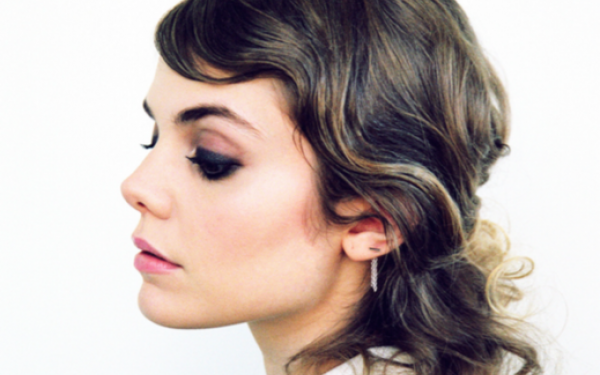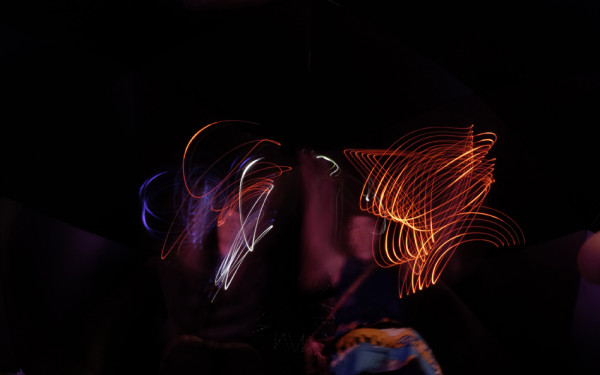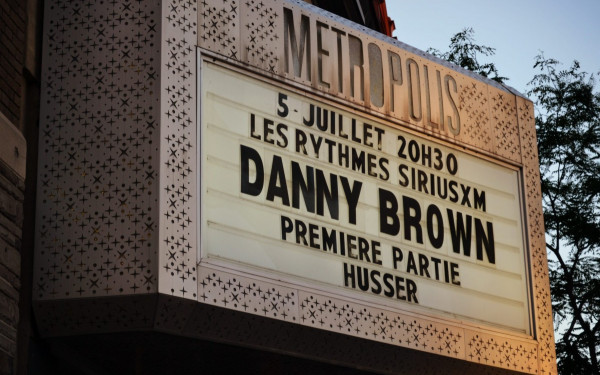A Portrait of the Country as a Young Nation
Artist Aquil Virani sets out to paint ‘Canada’s Self Portrait’
Not long ago, artist Aquil Virani was deemed “The People’s Artist” by McGill University’s Leacocks Magazine. Although it is quite a grandiose title, it is no doubt earned as Virani has worked ceaselessly to bring art to the people through his many collaborative pieces, leading him to his current project, “Canada’s Self Portrait.”
Although his interest in collaborative works started long before, the idea behind the project dates back more recently to his time at McGill when he put on two solo shows: in the first, “Mind Fcuk,” he explored the idea of visual trickery; in the second, titled “Copy Cat,” he dealt with the topic of copying and originality in art.
“That’s where I did probably my largest collaborative artwork to date,” he said. “I would get people to draw on little scraps of paper and then I would reproduce these little doodles all together in a mass to create a collaborative artwork, something that everyone was a part in.”
Working Together Towards a Greater Art
Many artists work through a collaborative method, but what makes Virani “The People’s Artist” is his dedication to making the joy of appreciating and creating art accessible to everybody.
“I try to battle on a daily basis the fear that people have of not knowing enough about art, that barrier that they feel, that comes from a lot of high art practices,” he said. “In that way I’m just a guy who happens to be able to paint who’s trying to share that joy with the people.”
Even in high school, Virani resented the strict separation of different types of learning that categorized students into specific boxes and forced them to choose between passions.
“I always wanted to share the joy I got from artwork with my non-art friends,” he said. “I had friends in choir and in rugby and in biology and in physics, and I wanted to find a way to make it easy for them to enjoy drawing.”
Now, when looking for participants for his pieces, he often encounters people who feel they should not participate because “they are not an artist.” Virani has made it his goal to convince them that they can be. But even for him, it’s easy to make assumptions based on outward appearances.
“I visited a school in New York last year and there was a student there that seemed pretty shy about being involved. So I tried asking him [to participate] and I told him, ‘If you can write you can draw,’ because writing is just circles and squares and lines,” he recalled.
“So that student in particular, he sits down and he ends up spending almost the entire day just doing more and more and at some point the next day he came and he brought his sketchbook and asked for feedback. It was just the least expected, because although you try not to make judgements, I had in my head that this guy was so shy he must not be an artist,” he continued.
“I corrected myself after and realized that you can be an artist and be a shy artist and you’re still 100 per cent a valid artist.”
Searching for Canada
But bringing art to the people is only one of Virani’s goals in “Canada’s Self Portrait.” Through the project he hopes to explore Canadian identity by making all the voices of Canada’s different people heard.
“I’m interested in Canadian identity because I consider myself Canadian,” he explained. “I grew up as half-French and half-Indian and yet I always thought of myself as Canadian first and I happen to have parents from different countries. So having an identity as a Canadian and yet not knowing exactly what that meant and not being satisfied with the definitions that are given is the inspiration for the project for me personally.”
Virani will set out across Canada to seek that satisfaction by asking people to draw for him, in any way they’d like, what it means to be Canadian. If stumped by this tough question, however, participants will be welcome to simply draw the first thing that comes to mind when they think of Canada. Although this tactic might be more encouraging and keep participants from over thinking the task, it could be said that identity is something worthy of deep thought. However, giving the participants the opportunity to express their thoughts in pictures rather than words, might protect from over simplification.
“I think that art has a way of expressing what can’t be easily expressed. I’m not going to say that visual art is better than writing, I think each particular medium has its strengths, but there are kind of deeper truths or more subtle truths that you can express through a drawing that maybe words couldn’t express,” he said.
Efforts are also being made to make sure the project is approached in an inclusive manner. Virani’s partner, Rebecca Jones, works for Montreal-based group Ensemble for the respect of diversity, an organization which promotes respect for the diversity among Quebec’s student population.
When in larger cities, such as Montreal, Virani and Jones plan to collect submissions in public and at random. They have also contacted organizations, such as school groups, to collaborate in places where there might not be as much pedestrian traffic.
There are difficulties to trying to reach all corners of such a large country, and financial restraints have made it impossible for them to reach the Northern Territories. In hopes of getting them involved, the team will be seeking submissions through the grunt work of networking and phone calls. An effort has also been made to include First Nations groups in the project, however there has been no confirmation yet.
But even with so much searching, Virani does not feel that there is an answer out there to be found.
“What I like about this project is that, in a small way, we’re kind of crafting the identity while we explore it,” he said. “The cool thing about identity is that discussing it changes it. So by making an artwork about the identity, maybe we’ll learn something. We’re not just observing what the identity is, but also creating it.”
Artist: Aquil Virani
In collaborative pieces it can be complicated for artists to keep hold of the work as their own. For Virani, it has been a challenge to balance the freedom given to participants in the project and his own control over it. Although he does not want their participation to be restrained and mechanical, it does still need to be his work. But after so much practice, he seems to have worked out the complications.
“Usually what I’ll do is that the particular shape that the doodles make is something that will come from me. Or maybe the composition is integrated into the background,” he explained. “I still have a lot of artistic control but the idea is to give the microphone to everyone else and I just kind of unite everyone with my particular style.”
It’s not just the participants he has to try not to restrain, however, but himself as an artist as well. He is diving into this project with only a general understanding of his visual goal.
“I have an idea in my head, but I also want to let that idea be shaped by the trip. It’s a little bit like improvisation […]; you kind of have an idea that you want to go with and maybe the scene might go this way but you’re leaving it open because the best things tend to happen when you keep an ear out for different ideas,” he said, adding that he expects the final work to be done in stylistic line drawings with a three colour pallet for richness.
Virani will be in Montreal with “Canada’s Self Portrait” in September and hopes to gather participants both in front of the Montreal Museum of Fine Arts and at Les Tam Tams du Mont Royal festival. He will also be fielding submissions online, so feel free to print out the handout at www.aquil.ca/canada.


_600_832_s.png)




